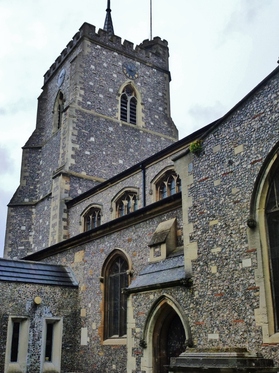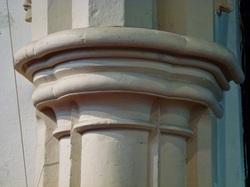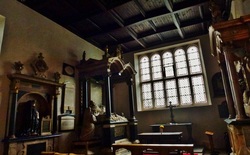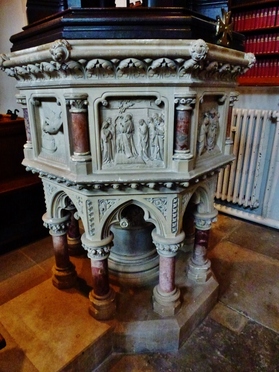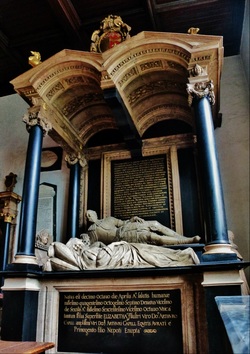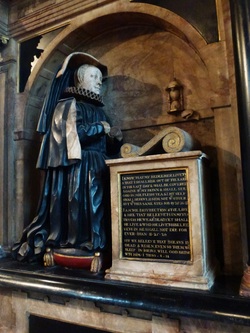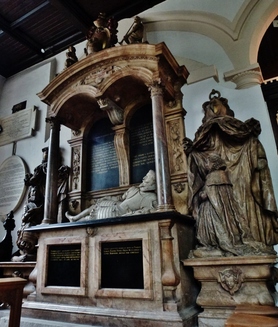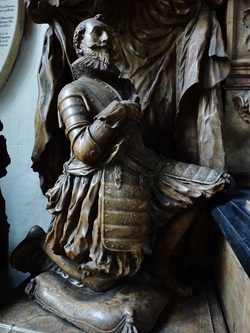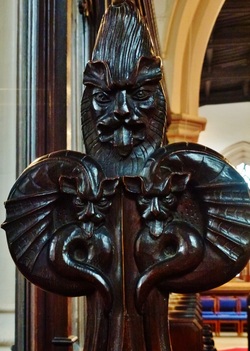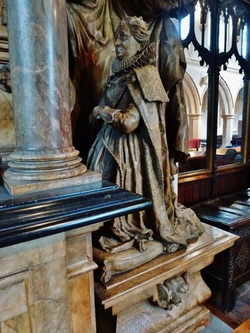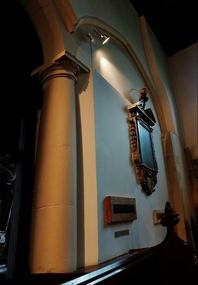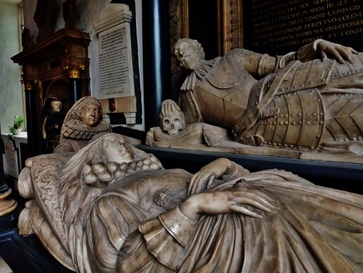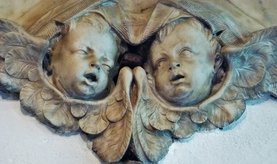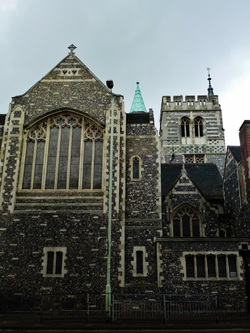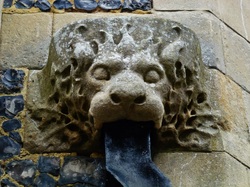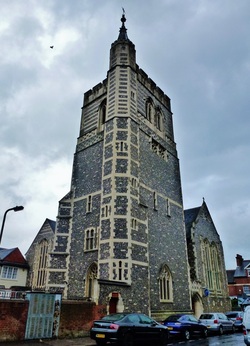St. Mary, Watford
Stone’s marbles.
Watford! That jewel of the south, the very name evocative of romance and delight...Well, perhaps not the first place one might consider for a day out, but it’s not as bad as the suburbs would lead you to believe, and it does have two decent churches close to each other off the High Street. Simon Jenkins plumped for the Edwardian Holy Cross, which I’ve always found locked, but I suspect that my choice would always have been the parish church, set back in a large graveyard, with most stones corralled into railings to the west. Around remain a few listed buildings, a pretty brick Dame school and a row of almshouses, but the big church with its solid tower has had every external stone replaced by the Victorians and there is little feeling of age. The nave retains its late mediaeval roof, the clerestory set on two fairly similar arcades, the south retaining some of the deeper mouldings of the late thirteenth century at the east end. The late fifteenth century roof rests on reused corbels, with heads sporting hairstyles of the previous century.
Stone’s marbles.
Watford! That jewel of the south, the very name evocative of romance and delight...Well, perhaps not the first place one might consider for a day out, but it’s not as bad as the suburbs would lead you to believe, and it does have two decent churches close to each other off the High Street. Simon Jenkins plumped for the Edwardian Holy Cross, which I’ve always found locked, but I suspect that my choice would always have been the parish church, set back in a large graveyard, with most stones corralled into railings to the west. Around remain a few listed buildings, a pretty brick Dame school and a row of almshouses, but the big church with its solid tower has had every external stone replaced by the Victorians and there is little feeling of age. The nave retains its late mediaeval roof, the clerestory set on two fairly similar arcades, the south retaining some of the deeper mouldings of the late thirteenth century at the east end. The late fifteenth century roof rests on reused corbels, with heads sporting hairstyles of the previous century.
An ornate marble font with intricate scenes of baptism was carved by Thomas Jeckyll in 1871, and is topped by a towering oak cover to match. Part of a Norman font lies forgotten in a dark corner of the north chapel, a drum carved with a wavy line dotted with orbs. The pulpit remains from the early Georgian refurbishment, thought to have been carved by Richard Ball, a pupil of Grinling Gibbons. The best glass here is an early design of the 1860s by Robert Bayne, unfortunately hidden in the tower behind glazed screens. Unexciting so far, it is only at the east end that this church comes to life, with two very different Sixteenth century chapels bracketing the thirteenth century chancel. The early Victorian stalls have imaginative poppyheads, with bishops and angels, birds and green men. The late mediaeval south chapel has an elegant two bay arcade with heraldic capitals and a scatter of tablets, whilst that to the north is late Elizabethan, with a Tuscan column holding up four centred arches.
Built as a family chapel for the Morrisons, a couple of Bedford tombs have migrated to their ancestral home at Chenies, where they lie jealously imprisoned in unapproachable gloom, their current guardians determined to keep us at a respectful distance, still seemingly fearful that photography will steal the souls within. Three large tombs remain, well lit by a rather secular ten light window under a deep panelled roof. The life size Lady Dorothy Morrison kneels under the smallest tomb canopy at her prayer desk, dressed in lace ruff and widows’ weeds; opposite her the massive tomb of Sir Charles Morrison fills a bay of the arcade, with outlying tents for his children pitched on each side. Charles died in 1590, but his tomb by the great sculptor Nicholas Stone was not made until 1619, costing £260, around £40,000 today. His effigy lies in armour, head propped in hand, under a canopy of orange veined alabaster set on Corinthian columns. In the campaign tent at his feet kneels his son, wearing the baggiest of balloon breeches under his armour, whilst the daughter kneels close by his head, similarly housed and wearing coronet and farthingale.
In the north east corner is another monument by Stone, to another Sir Charles Morrison, this being the son kneeling by the other tomb. This tomb was even more expensive, at £400 the equivalent of £52,000 today. This Charles marries Mary Hicks, daughter of Baptist Hicks of Chipping Campden, he becomes a baronet and M.P., and his daughter Elizabeth became mother to Earls of Essex, some of whom lie here. She kneels outside the head of this second tomb, and two other children kneel by the foot. These monuments by Nicholas Stone are excellent and would not be out of place in Westminster Abbey, being not only splendid in size or gilded magnificence, but also because of the depth of feeling and attention to detail that makes the figures portraits rather than just dolls. There are walls covered with the tablets and memorials of five centuries, including those of the Earls of Essex, but it is the two big prodigy tombs that make this church.
St.Mary's church is open weekdays for a few hours at least, and the office is open 9.00-4.00 Mon. To Thurs. on 01923 225189 whereas I’ve yet to find the R.C. church open. Their office is on (01923) 224085.
Holy Rood R.C. church
.Built between 1883 and 1890 by Francis Bentley in a pumped up version of local styles, this church gets good reviews for its sumptuous fittings. From the outside it is obvious that no expense has been spared, and the finish and attention to detail bodes well for the visiting ecclesiologist. However, three visits so far have met with no joy; the church is resolutely locked and no details given for access. Their office is on (01923) 224085.
Holy Rood R.C. church
.Built between 1883 and 1890 by Francis Bentley in a pumped up version of local styles, this church gets good reviews for its sumptuous fittings. From the outside it is obvious that no expense has been spared, and the finish and attention to detail bodes well for the visiting ecclesiologist. However, three visits so far have met with no joy; the church is resolutely locked and no details given for access. Their office is on (01923) 224085.
All rights reserved for this entire site. Copyright reserved to stiffleaf for all text and images, which may not be reproduced without my permission.
